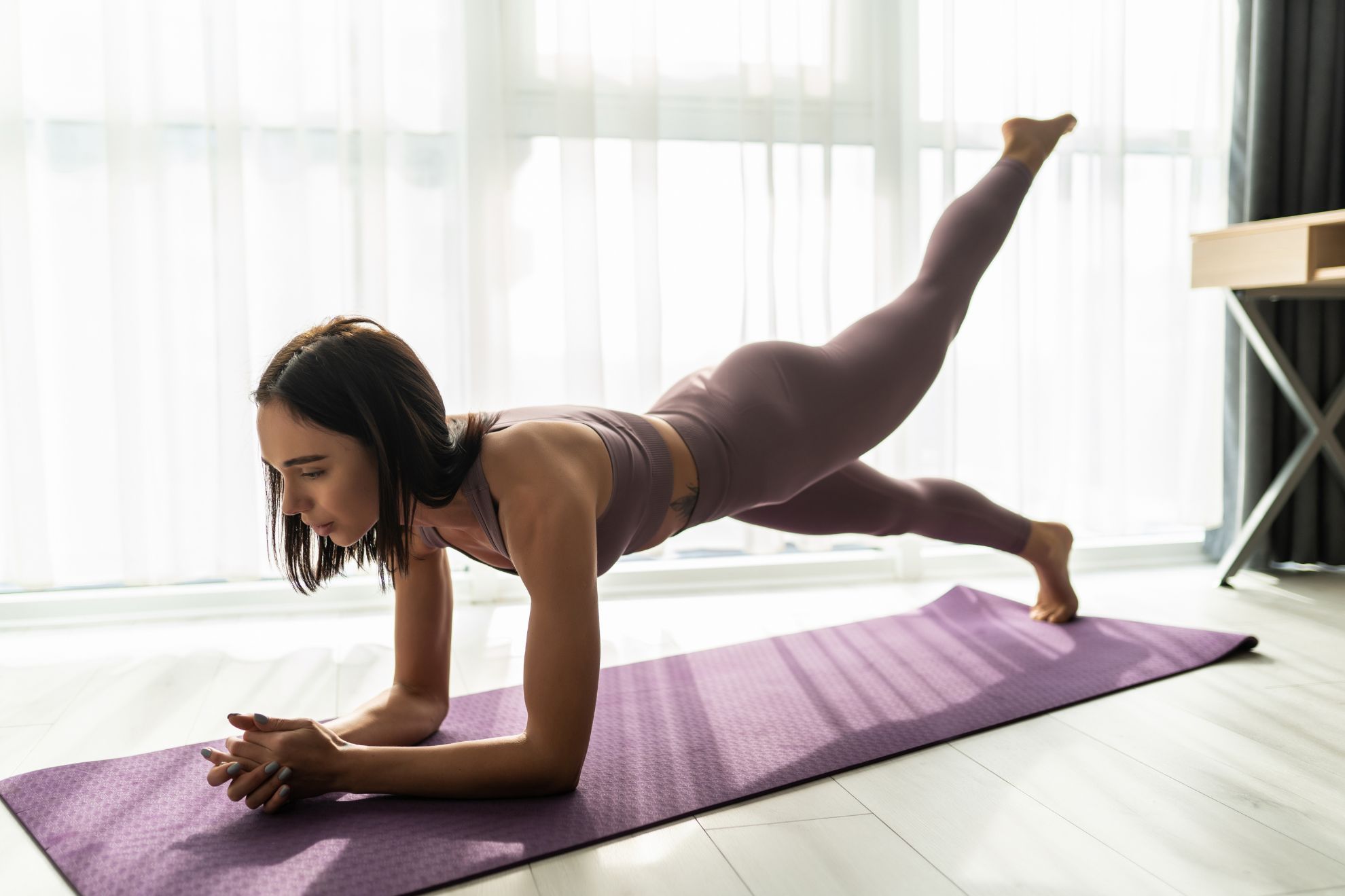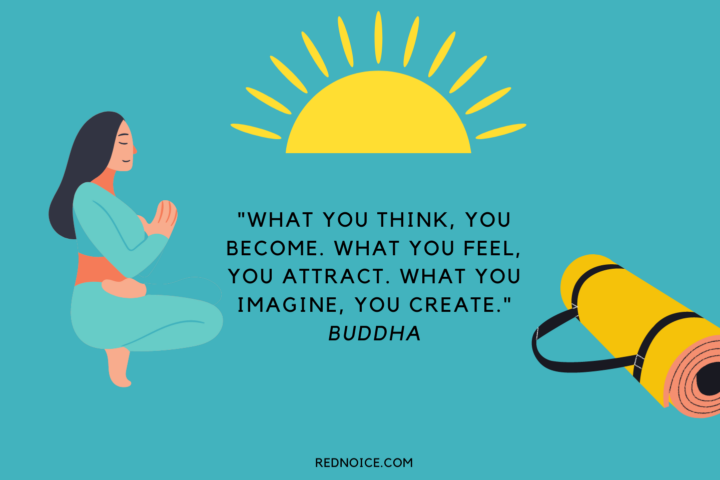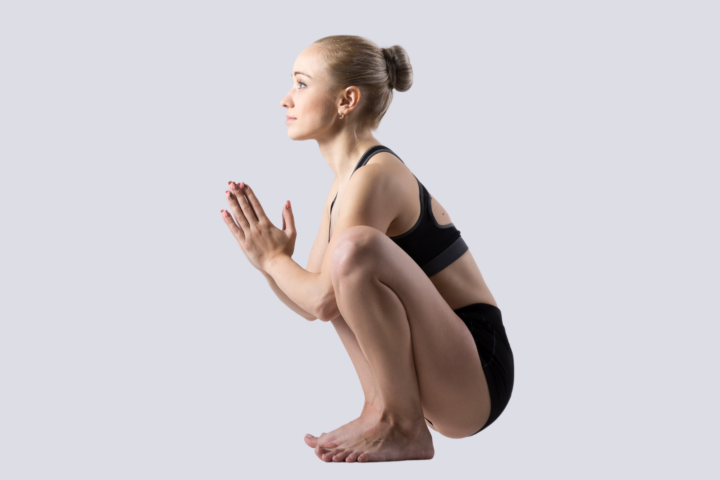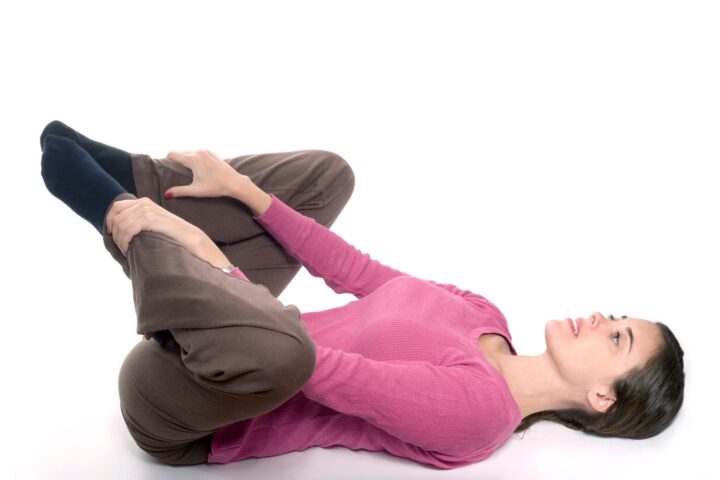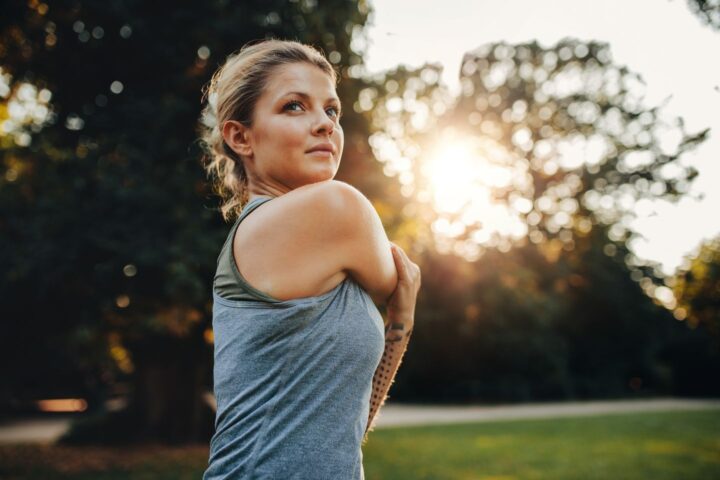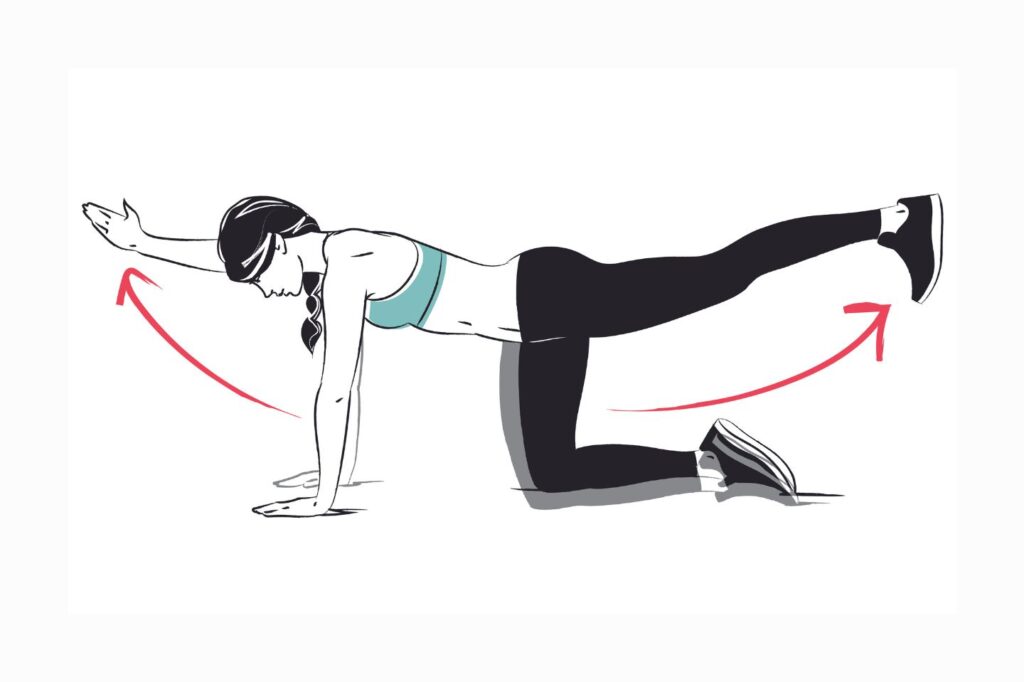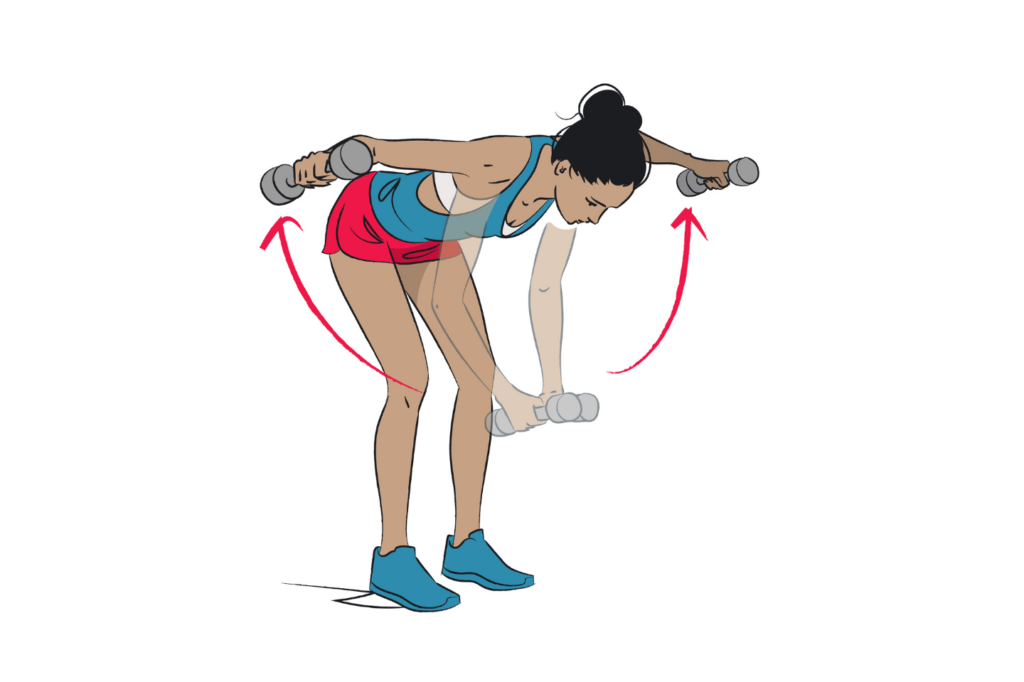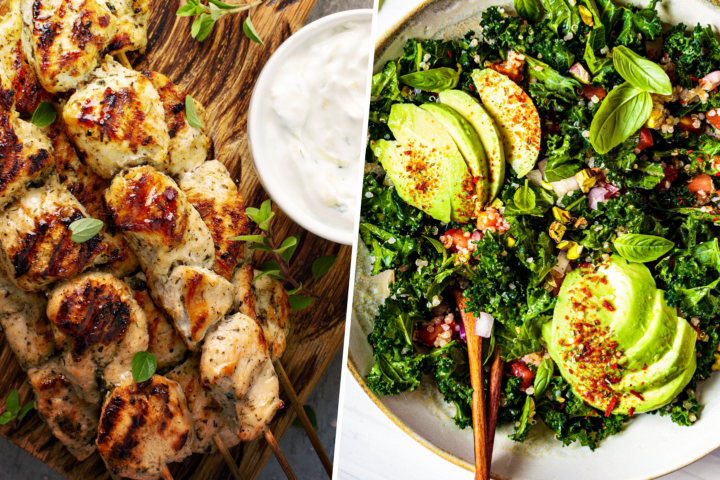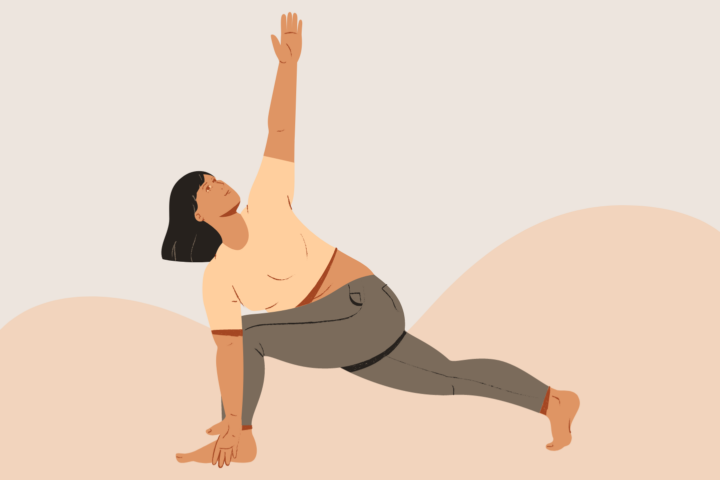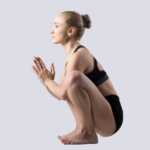When you hear the term “core exercise” your mind often goes to the abs. To be fair, this isn’t necessarily an incorrect way of viewing “the core” but it is perhaps a bit incomplete. For most fitness professionals, the core consists of the abs (all four of them), lower back, glutes, and a few other minor muscles.
Of particular importance (and interest to many gymgoers) are the abs and glutes. These key muscles are crucial for both function and aesthetics. Best of all, when you learn to co-contract your abs and glutes (work them at the same time), you can stave off a host of hip and back issues (1).
During many different exercises, the abs and glutes should both be contracted and kept tight throughout the movement (2). In this post, I’ll review the methods you can use to activate your glutes and abs at the same time. After that, I’ll provide some great movements that you should consider incorporating into your weekly exercise routine for maintaining strong, functional, and aesthetic core muscles.
How to Co-Contract the Glutes and Abs
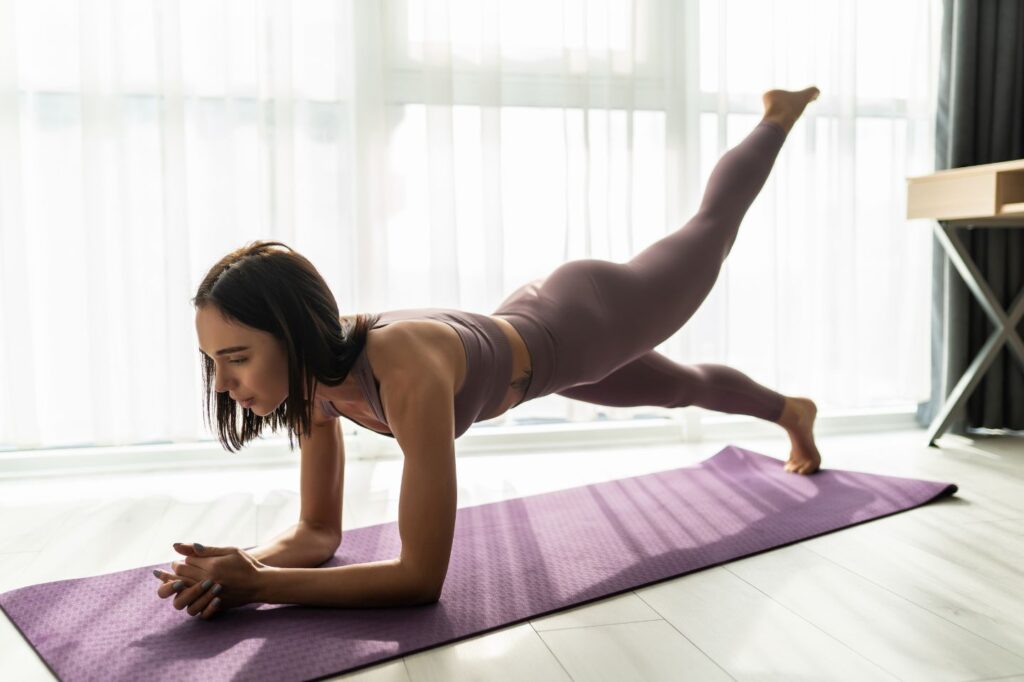
For novices, learning to activate two separate muscles at the same time can take some serious concentration. But once you learn how to do so, it’s like riding a bike. Plus, you’ll experience massive improvements in both your form and your overall performance in the gym.
First off, you should focus on learning how to isolate one of these muscles at a time. For the abs, we are referring specifically to a muscle known as the rectus abdominis (the 6-pack muscle). To contract this muscle, you should think about “vacuuming” your stomach in slightly while also pretending as if you are performing a crunch.
Few people have trouble contracting the glutes by themselves. As simple as it sounds, all you really need to do is to squeeze your buttocks.
Once you’ve mastered these individual movements, now it’s time to combine them. This is where it gets a bit tricky. But once you learn to easily isolate one of them, adding in the second isn’t too bad. It just takes a lot of practice.
15 Ab and Glute Combination Exercises

Below, we’ll take a look at a workout that will emphasize both the glutes and the abs. By performing this workout 2-3 times a week, you can expect to straighten your core, improve your posture, and put yourself in a position to be more proficient in any sport or activity in which you choose to participate.
1. Bird Dogs Level II
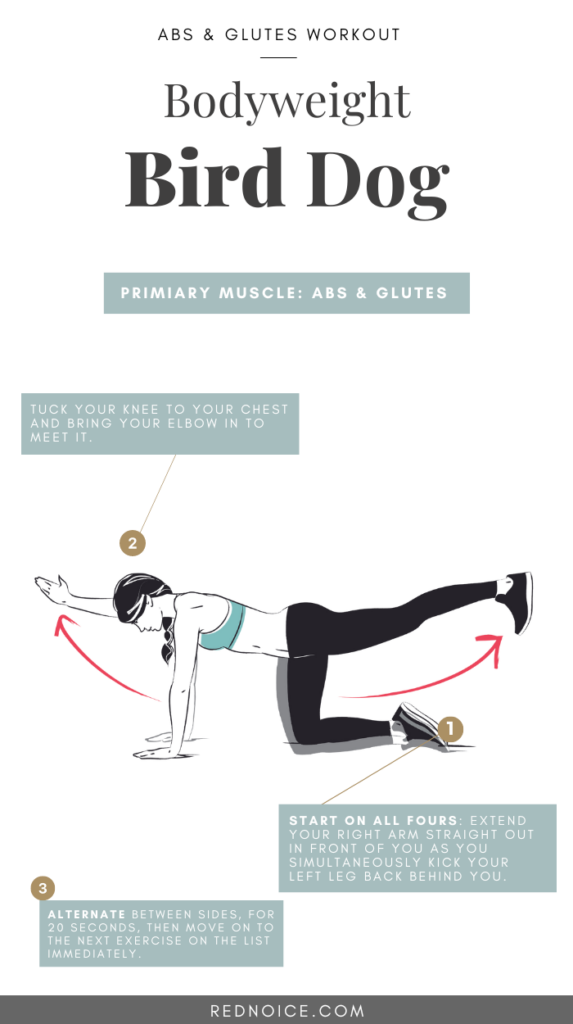
Bird dogs are the quintessential ab and glute move. This exercise is great for so many different muscles and is a popular choice for those looking to prevent and address back pain as well.
How to Perform
- Start on hands and knees.
- Extend your right arm straight out in front of you as you simultaneously kick your left leg back behind you.
- Next, tuck your knee to your chest and bring your elbow in to meet it.
- Perform this move, alternating between sides, for 20 seconds, then move on to the next exercise on the list immediately.
2. Single-Leg RDL
Perfect for improving balance, strength, and stability, the single-leg RDL checks all the boxes.
How to Perform
- Start by standing on your right leg.
- Keep your back straight, and hinge at the hips so that your chest is now facing the ground.
- At the same time, kick your left leg back behind you so that it is in line with your trunk.
- Return to the starting position and switch sides.
- Repeat this movement for 20 seconds then move on to the next exercise.
3. Turkish Get-Ups Level II
Turkish get-ups are a deceivingly hard exercise. This movement is often performed with a kettlebell in hand, but it is equally effective with no weight at all. When you have mastered this move, consider moving onto the full Turkish get-up!
How to Perform
- Lie on your back with your right knee bent, right foot flat on the floor, right arm reaching for the ceiling, and left leg out straight.
- Prop yourself up on your left forearm, then push yourself up to your left hand and lift your left leg off of the ground slightly.
- Return to the starting position and perform for 20 seconds on this side, then switch sides and perform for 20 seconds on the other side. Then move on to the next exercise.
4. Bridges with Knee Tuck
When you think glutes, think bridges. Bridges are an isolation exercise for the glutes par excellence.
How to Perform
- Start by lying on your back with your knees bent and your feet on the ground.
- Keeping your arms off of the ground to increase core activation, lift your hips into the air.
- While your hips are raised, tuck your right knee to your chest.
- Then, return the right foot to the ground and repeat on the other side.
- Continue to alternate in this manner for 20 seconds, keeping your hips raised the whole time. Then move on to the next exercise.
5. Conventional Deadlift with Weight
You can use dumbbells, a barbell, kettlebells, or whatever else you have that’s heavy. However, except for absolute beginners, you probably should perform this move with at least a little bit of weight.
How to Perform
- Stand with your feet spaced about hip-width apart, holding whatever weight you choose with both hands.
- Next, allow your knees to bend slightly as you lower the weight to the ground.
- Tap the ground lightly with the weight, then return to standing, using your glute in order to power the movement.
- Repeat this movement for 20 seconds, then move on to the next exercise.
6. Push Press
Break your dumbbells back out for this exercise. You’ll definitely want to have some weight in order to complete this move.
How to Perform
- Hold the dumbbells at your shoulders.
- Squat down as low as you can, keeping your back straight.
- As you stand back up, push the weights overhead.
- Return to the starting position and complete as many reps as you can in 20 seconds. Then, move on to the next exercise.
7. Good Mornings
Good mornings are a terrific choice for core strengthening. This move combines the best aspects of both the squat and deadlift.
How to Perform
- Holding a bar across your shoulders (or with no weight), start in standing.
- Bend your knees slightly, and bend forward at your waist.
- Then, squat down and reverse the motion to return to the starting position.
- Repeat this alternating pattern for 20 seconds then move on to the next exercise.
8. Hyperextensions
For some people, hyperextending the low-back may be uncomfortable. If this is the case for you, skip this exercise.
How to Perform
- Start by lying on your stomach.
- Lift your arms, chest, and legs off of the ground, attempting to only have your hips and abdomen in contact with the floor.
- Hold this contraction for 20 seconds, then move on to the next exercise.
9. Side Lunge with Leg Raise
Lunges of all types are awesome for the glutes. Plus, they are a functional movement that can help to train the entire lower body and many different core muscles.
How to Perform
- In standing, step your right leg out to the side.
- Lunge down, bending your knees and hips but keeping your back straight.
- Push yourself back up and then tuck your right knee to your chest.
- Repeat this motion for 20 seconds then move to the other side for 20 seconds. Then, progress to the next exercise.
10. Kneeling Scorpions
In an exercise context, scorpions refer to movements where the leg is brought across the midline. This movement emphasizes the glutes, abs, and inner thighs.
How to Perform
- Start on hands and knees.
- Lift your right leg up and straighten it out behind you, so that it is in line with your trunk.
- Reach the leg out to the right side and tap it to the ground.
- Then, cross your leg over your left leg and tap it to the ground on that side.
- Repeat for 20 seconds and then move to the other side.
- Then, move on to the next exercise.
11. Single-leg sit-to-stands
Sit-to-stands are essentially squats, with a bit of assistance. This move is wonderful for strengthening the knees, hips, and many muscles of the lower body and core.
How to Perform
- Start by sitting on a chair.
- Lift your left leg off of the ground and stand up, using only your right leg.
- Then, return to sitting.
- Repeat for 20 seconds, alternating legs.
- Then, move on to the next exercise.
12. Fire Hydrants
If you’ve ever owned a dog, or seen one pass by a fire hydrant, you’ll have an idea of how this move is supposed to look.
How to Perform
- Start on hands and knees.
- Lift your right leg out to the side, keeping your knee bent and your back flat.
- Return the knee to the ground and repeat on the other side.
- Complete as many reps as you can in 20 seconds.
- Then, move on to the next exercise.
13. Isotonic Bridges
Previously, I described isometric (held) bridges, combined with a leg raise. This is a more traditional bridge where both legs are used and there is no official isometric component.
How to Perform
- Start by lying on your back with your knees bent and your feet flat on the floor.
- Press your heels into the ground, lifting your hips toward the ceiling as high as you can.
- Then, lower back down to the starting position.
- Complete as many reps as you can in 20 seconds, then move on to the next exercise.
14. Windmills
Windmills are a classic kettlebell workout, made popular in Russia. This exercise can be performed in standing or in kneeling.
How to Perform
- Start in Standing, holding a kettlebell in your right hand.
- Next, lower your left hand down to the ground while opening your trunk up to the right.
- Then, return to standing.
- Complete as many reps as possible in 20 seconds.
- Next, move on to the other side for 20 seconds.
- Progress to the next exercise when finished.
15. Donkey Kicks
Much like fire hydrants, donkey kicks utilize a kneeling position and a leg raise to get the glutes working.
How to Perform
- Start on hands and knees.
- Keeping your right knee bent, kick your right foot to the ceiling.
- Return to the starting position and switch sides, completing as many reps as you can for 20 seconds. Then, either conclude your workout or move back to the first exercise and start all over!
Conclusion
The glutes and abs are integral and interrelated parts of the core. By working both of these muscle groups together and keeping them as strong as possible, you’ll put yourself in a great position to avoid injury and thrive in whatever it is you want to pursue!
Works Cited
- Koelewijn AD, Van Den Bogert AJ. Antagonistic co-contraction can minimize muscular effort in systems with uncertainty. PeerJ. 2022 Apr 7;10:e13085. doi: 10.7717/peerj.13085. PMID: 35415011; PMCID: PMC8995038.
- Neto WK, Soares EG, Vieira TL, Aguiar R, Chola TA, Sampaio VL, Gama EF. Gluteus Maximus Activation during Common Strength and Hypertrophy Exercises: A Systematic Review. J Sports Sci Med. 2020 Feb 24;19(1):195-203. PMID: 32132843; PMCID: PMC7039033.

